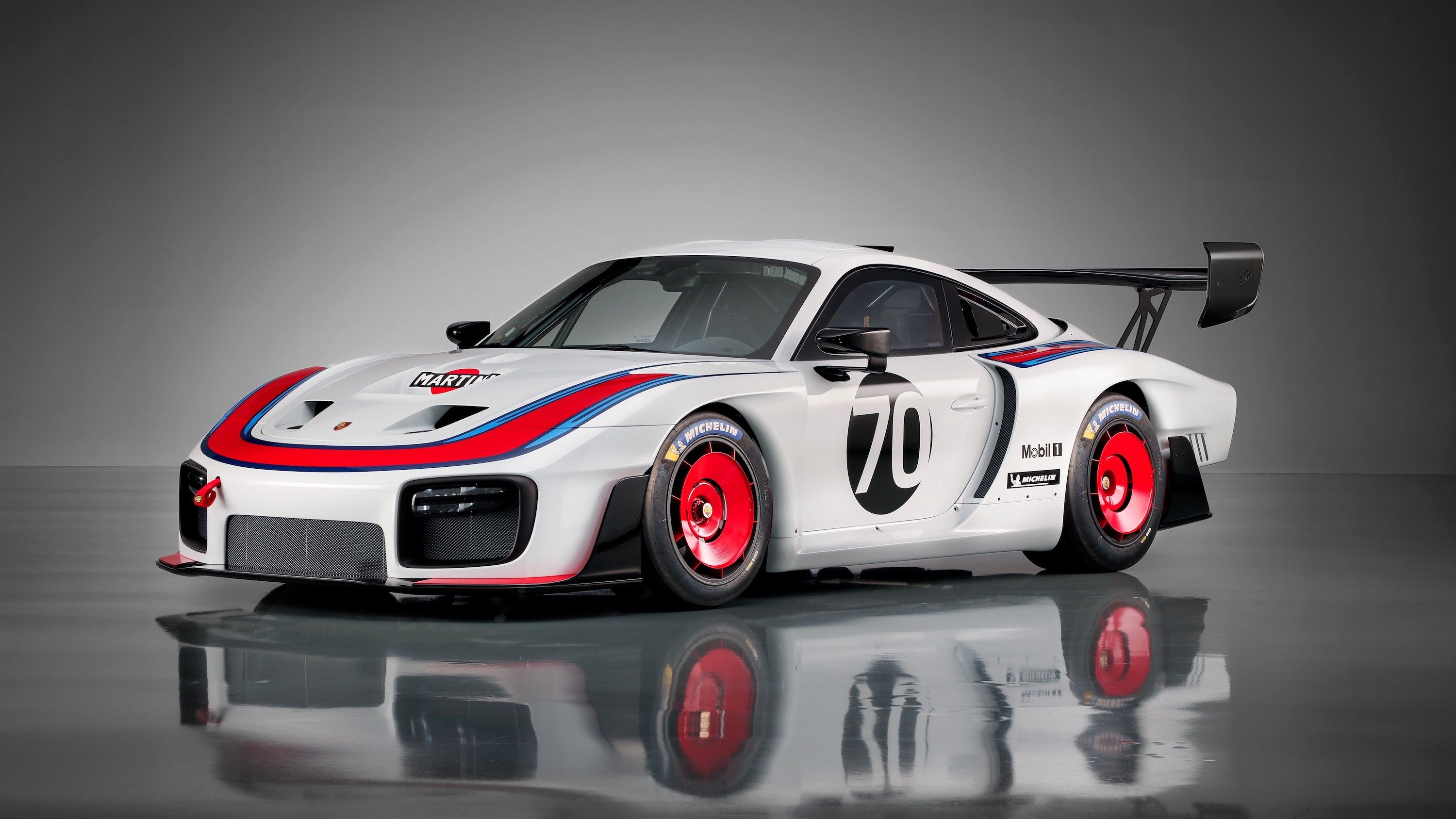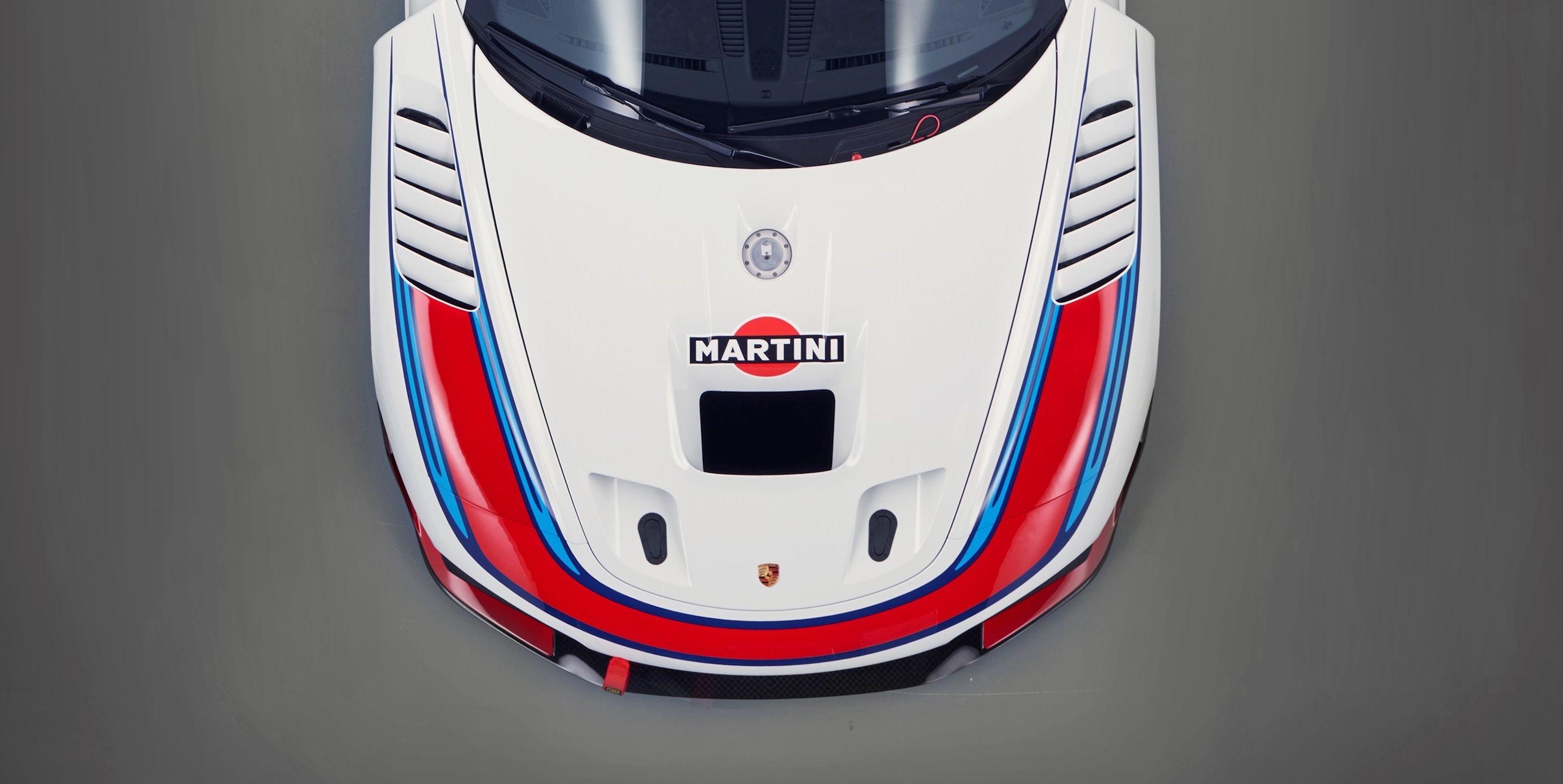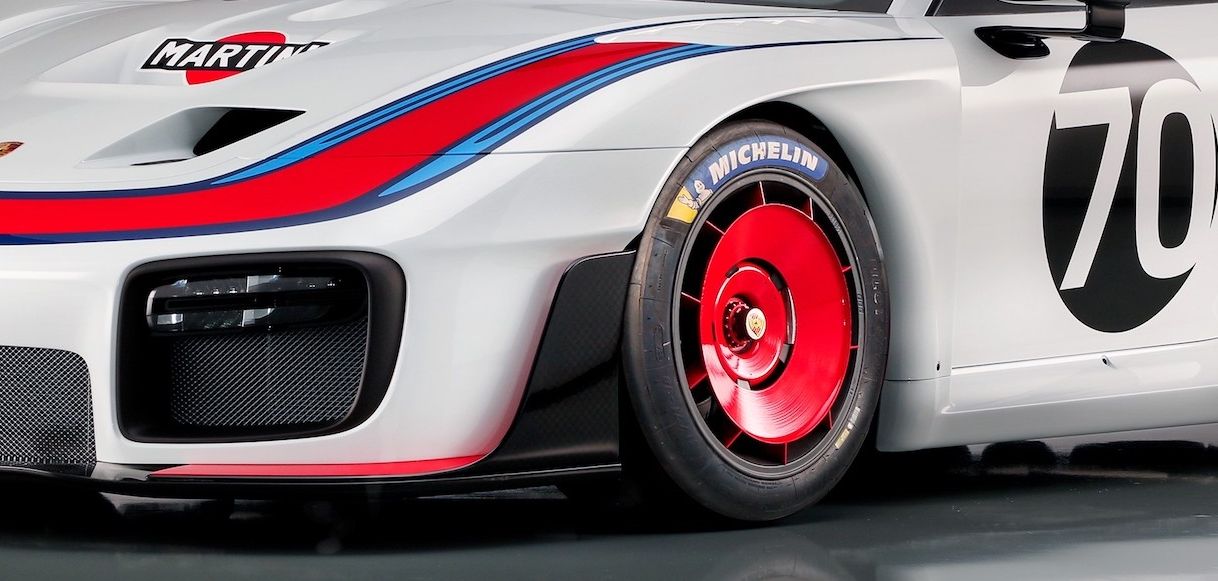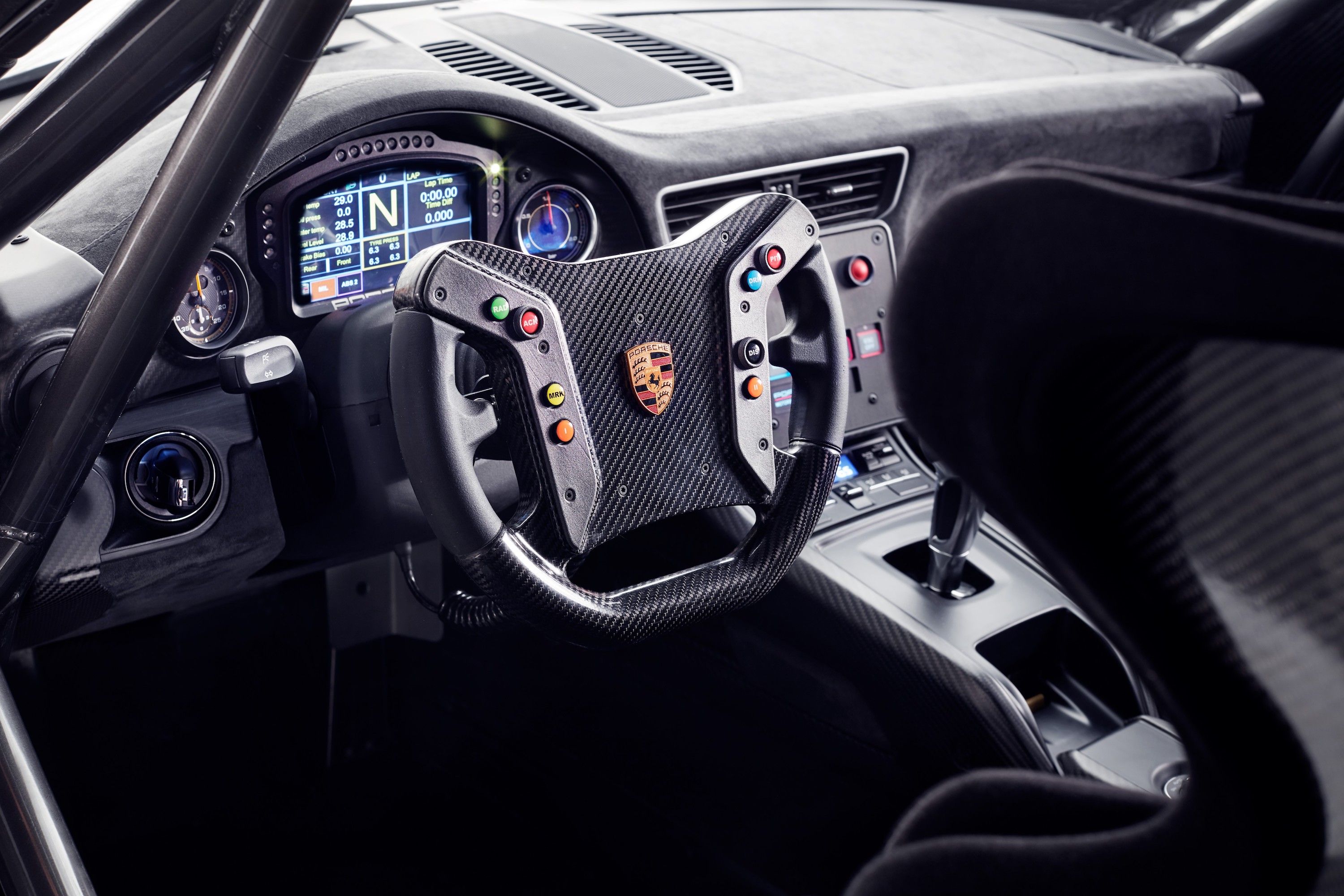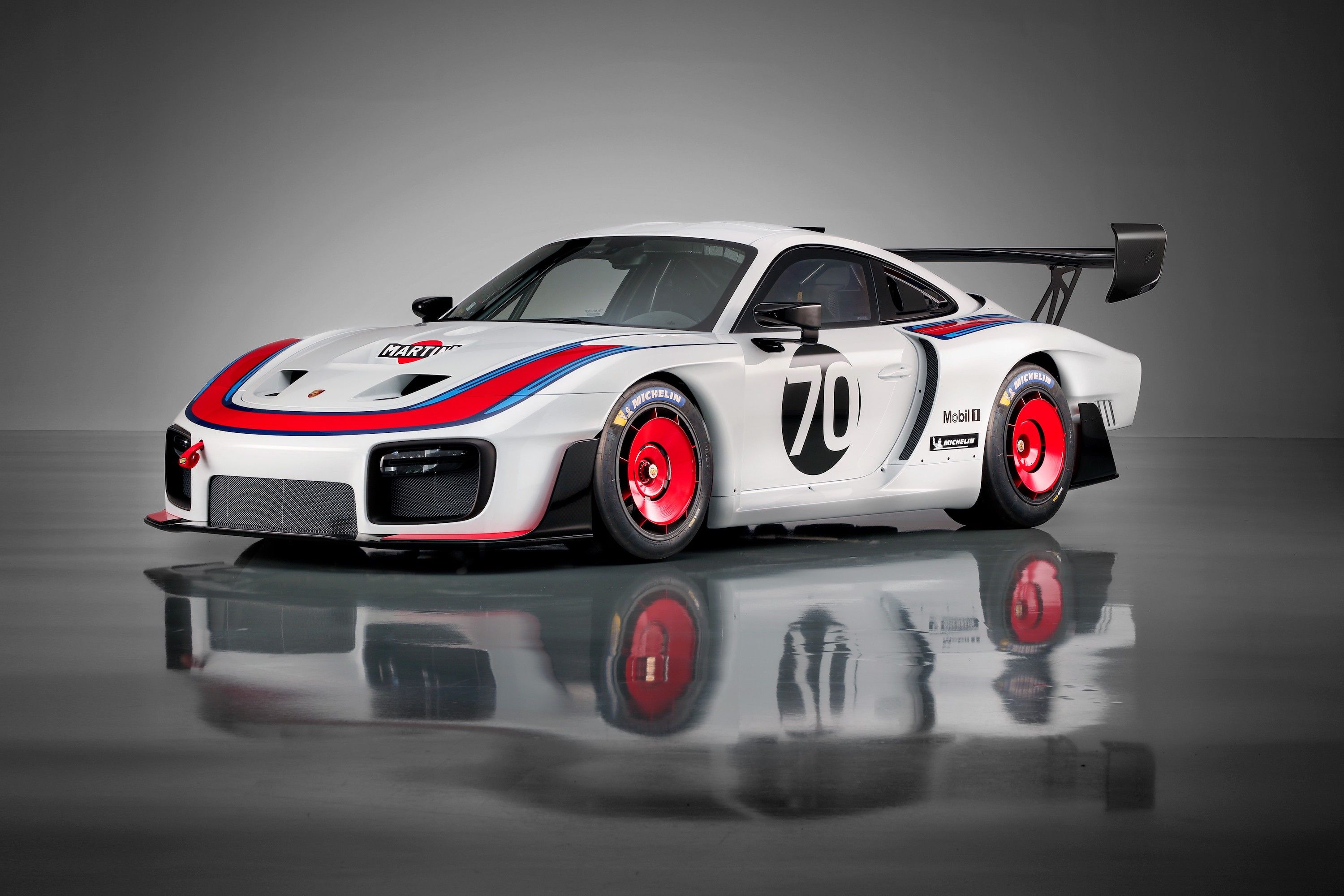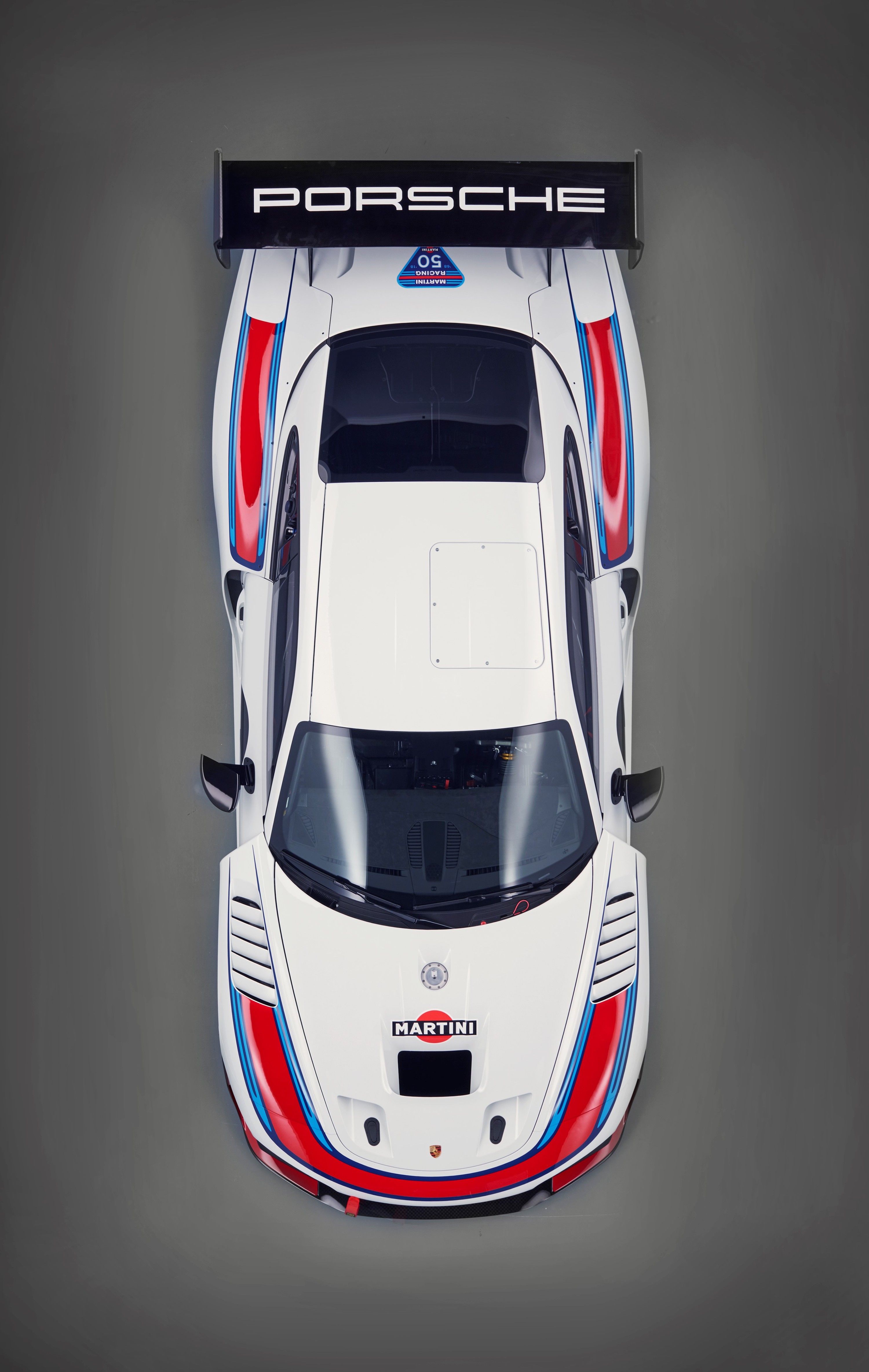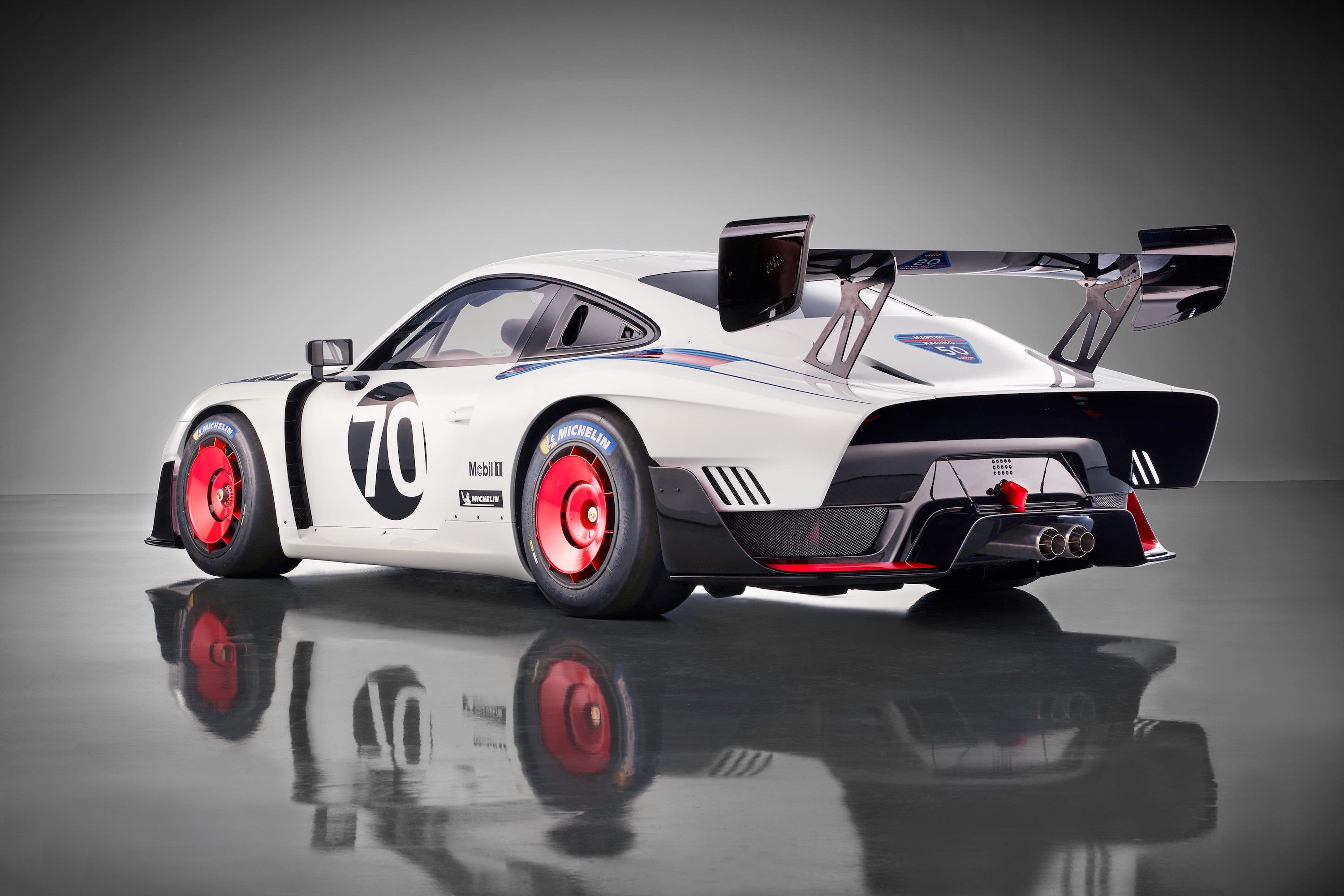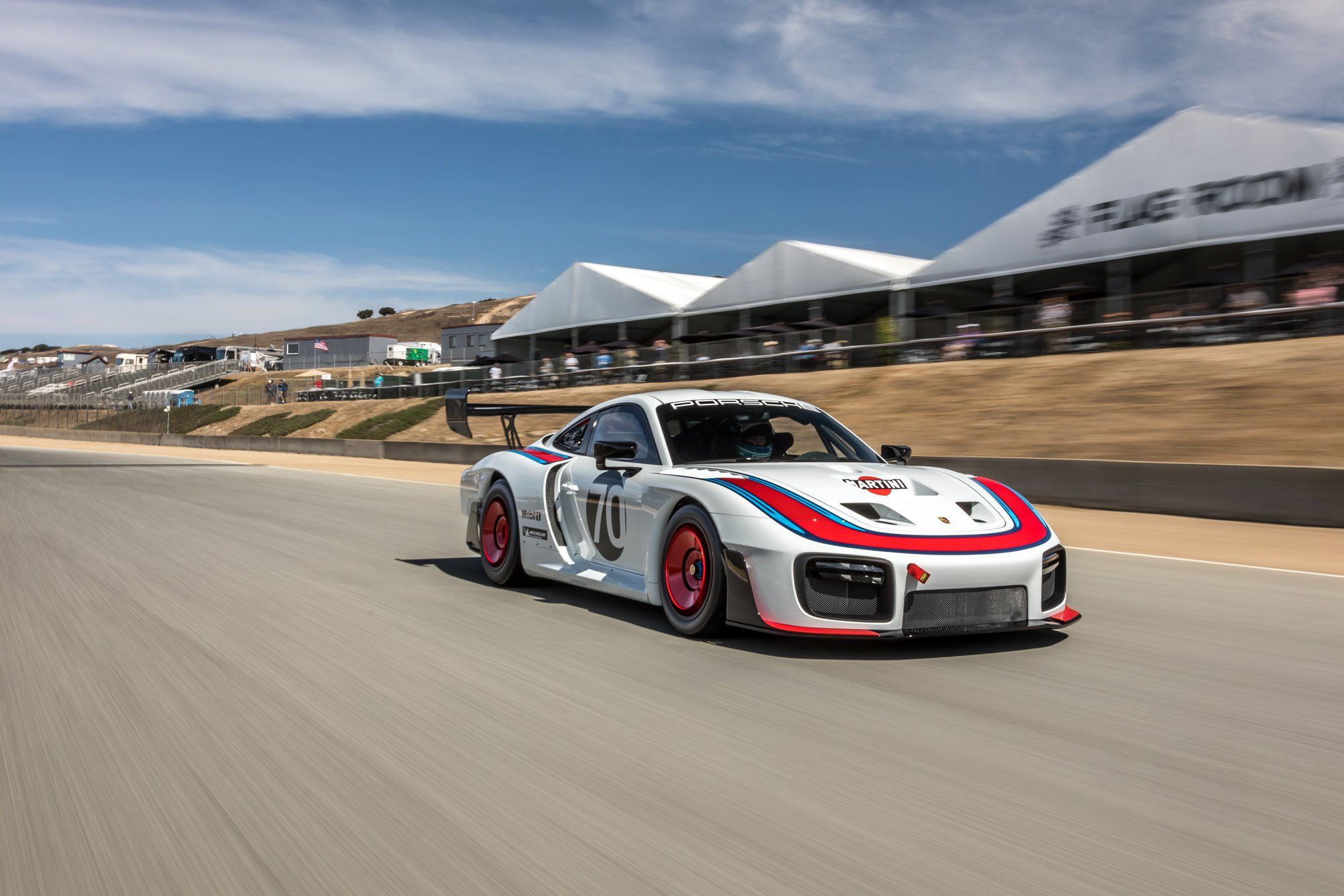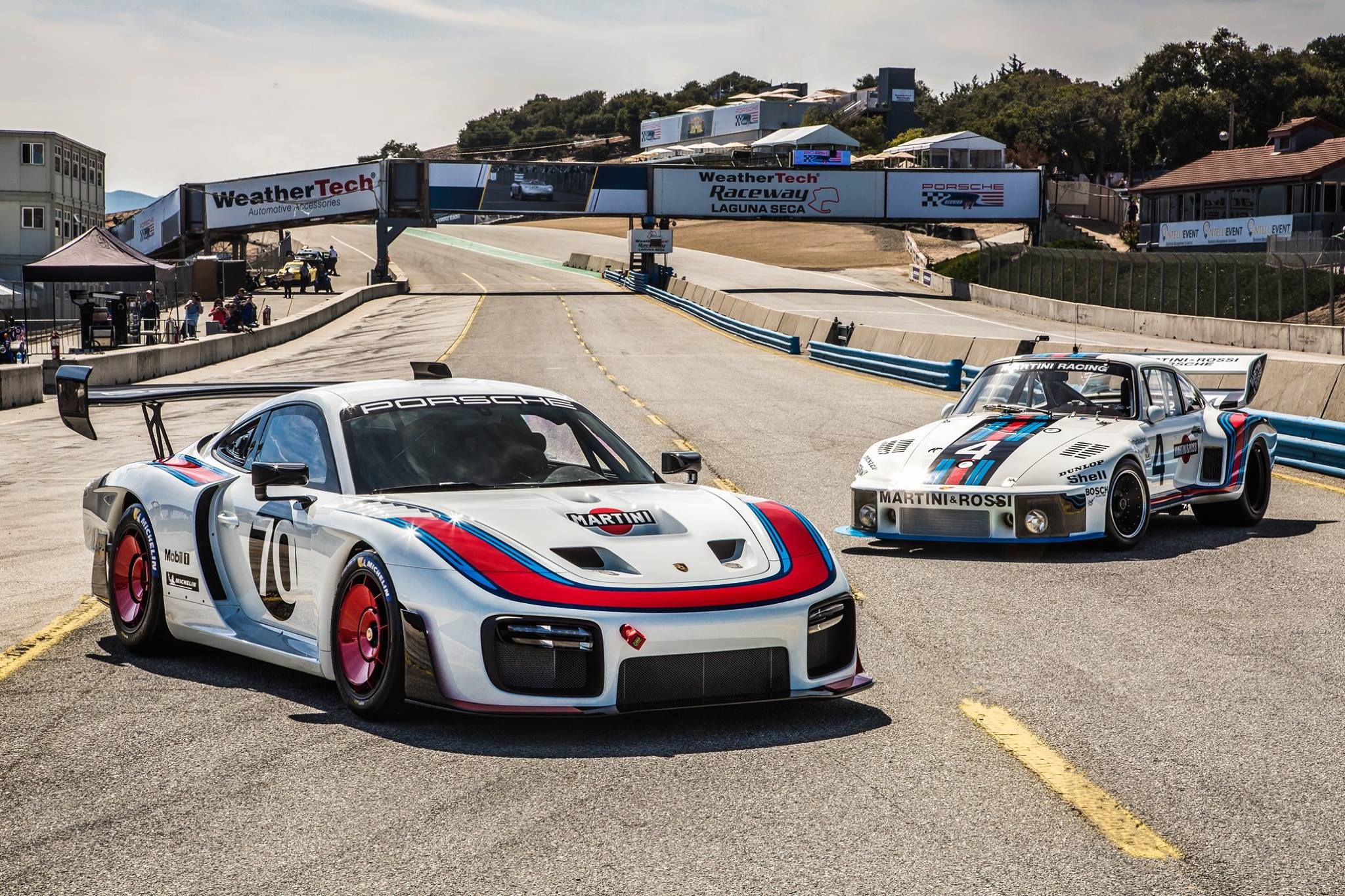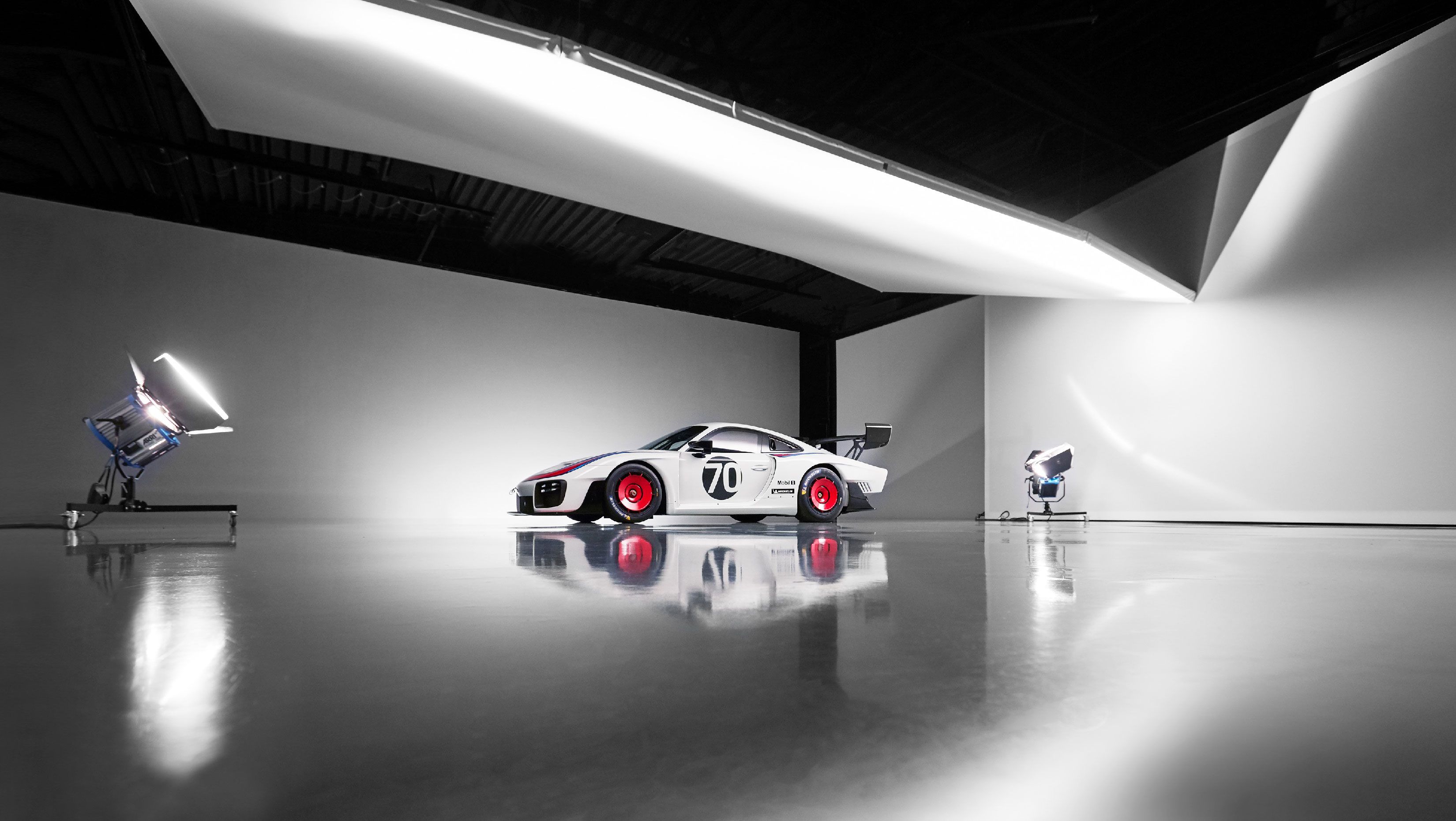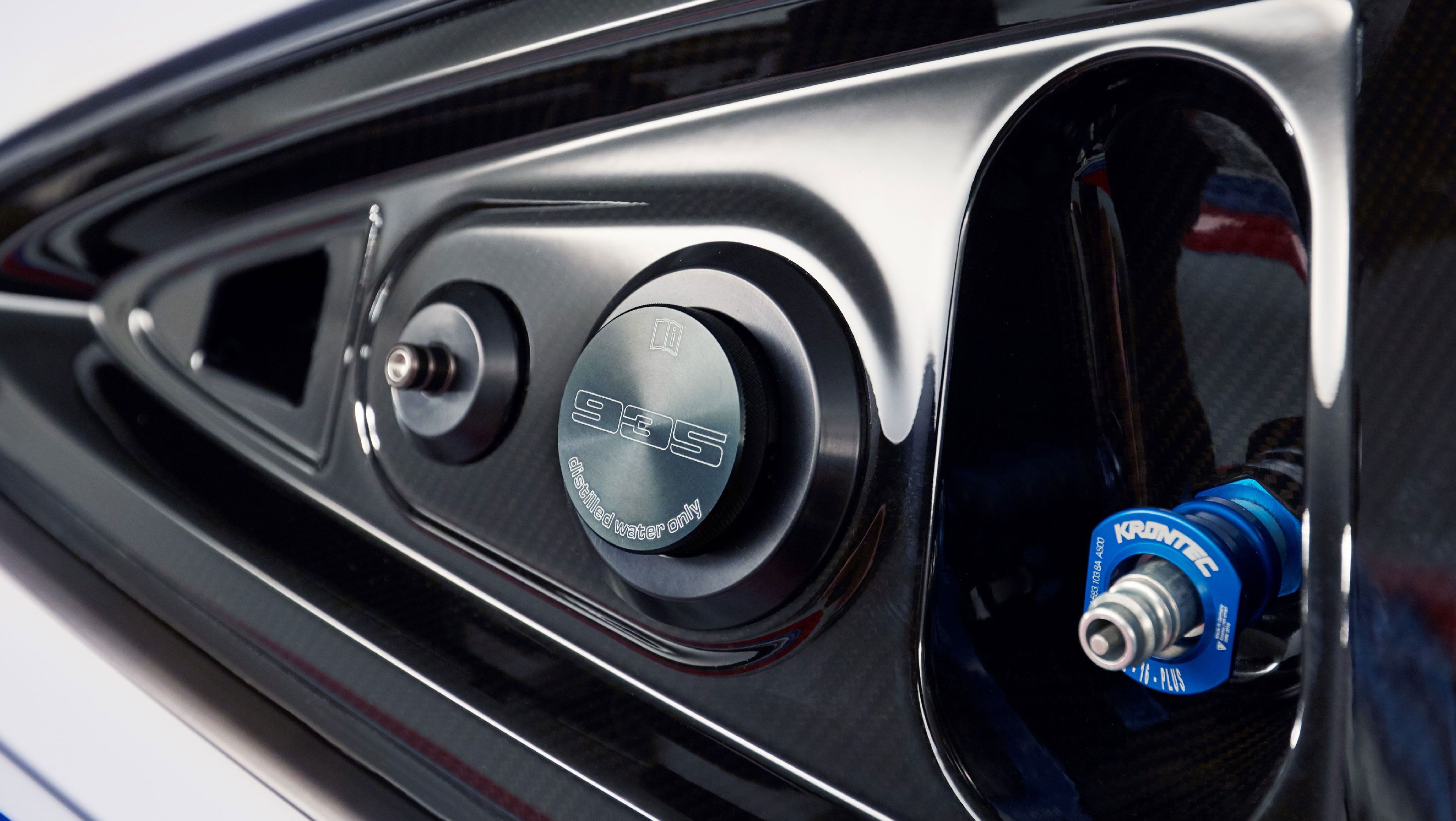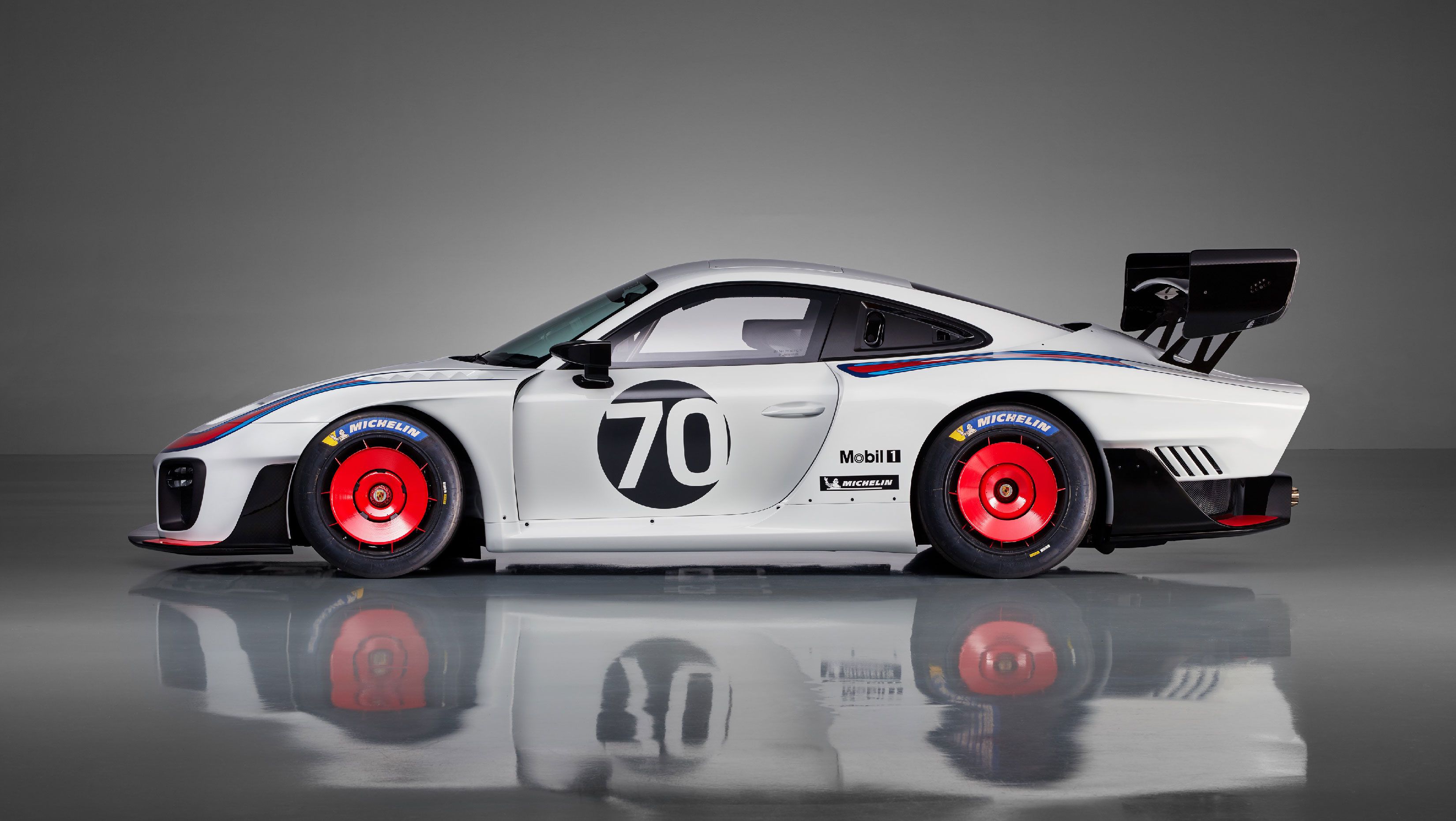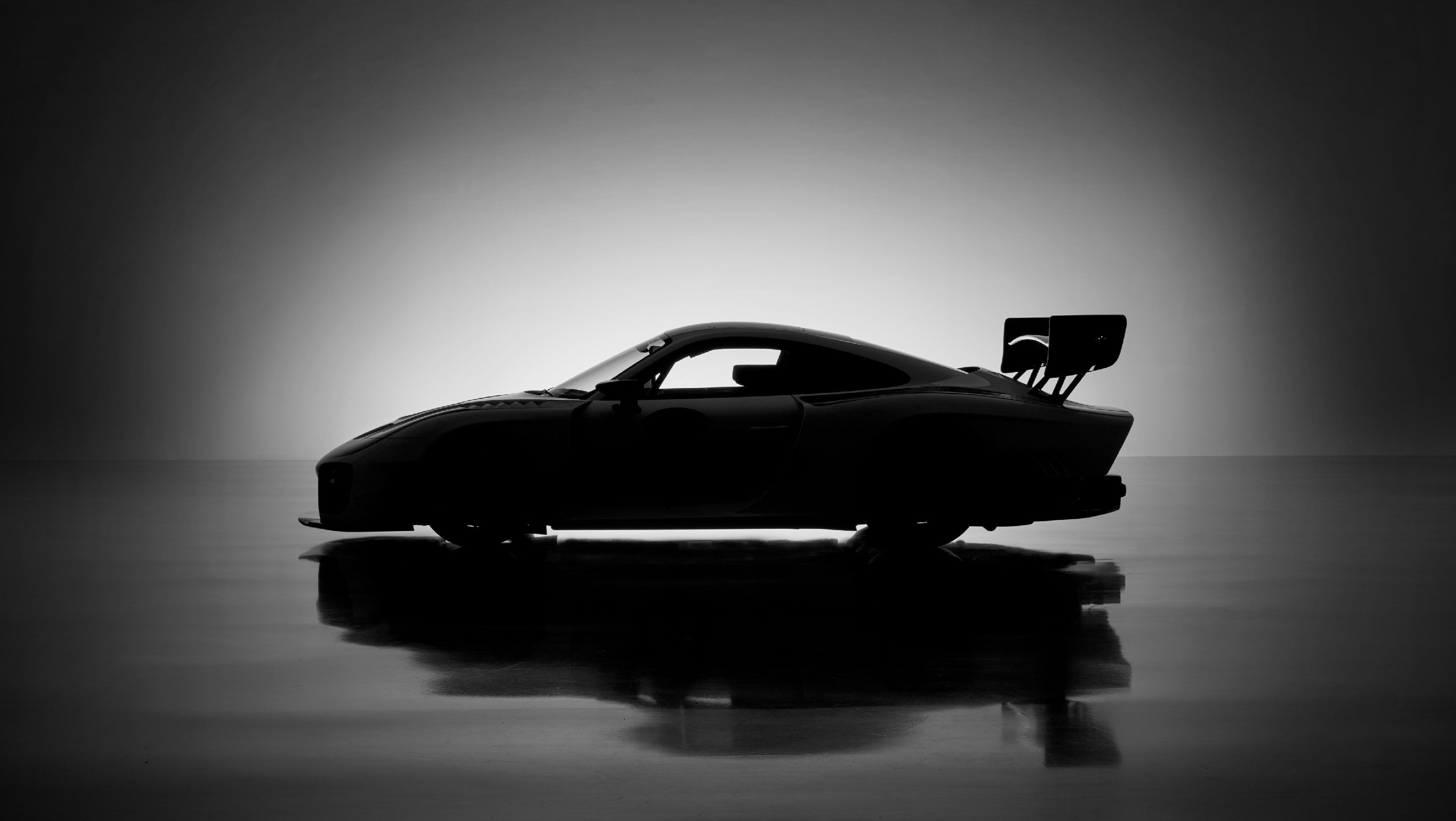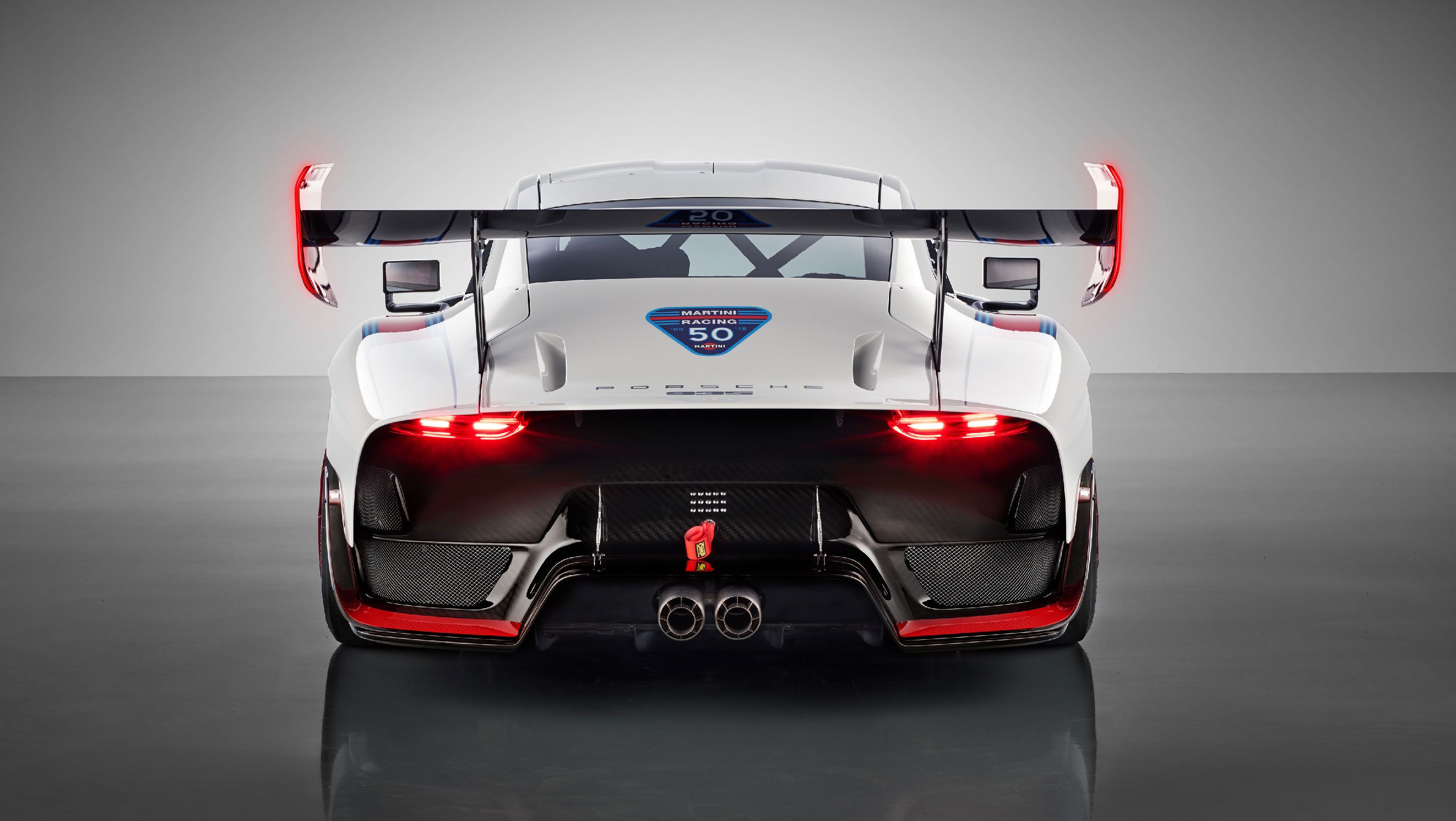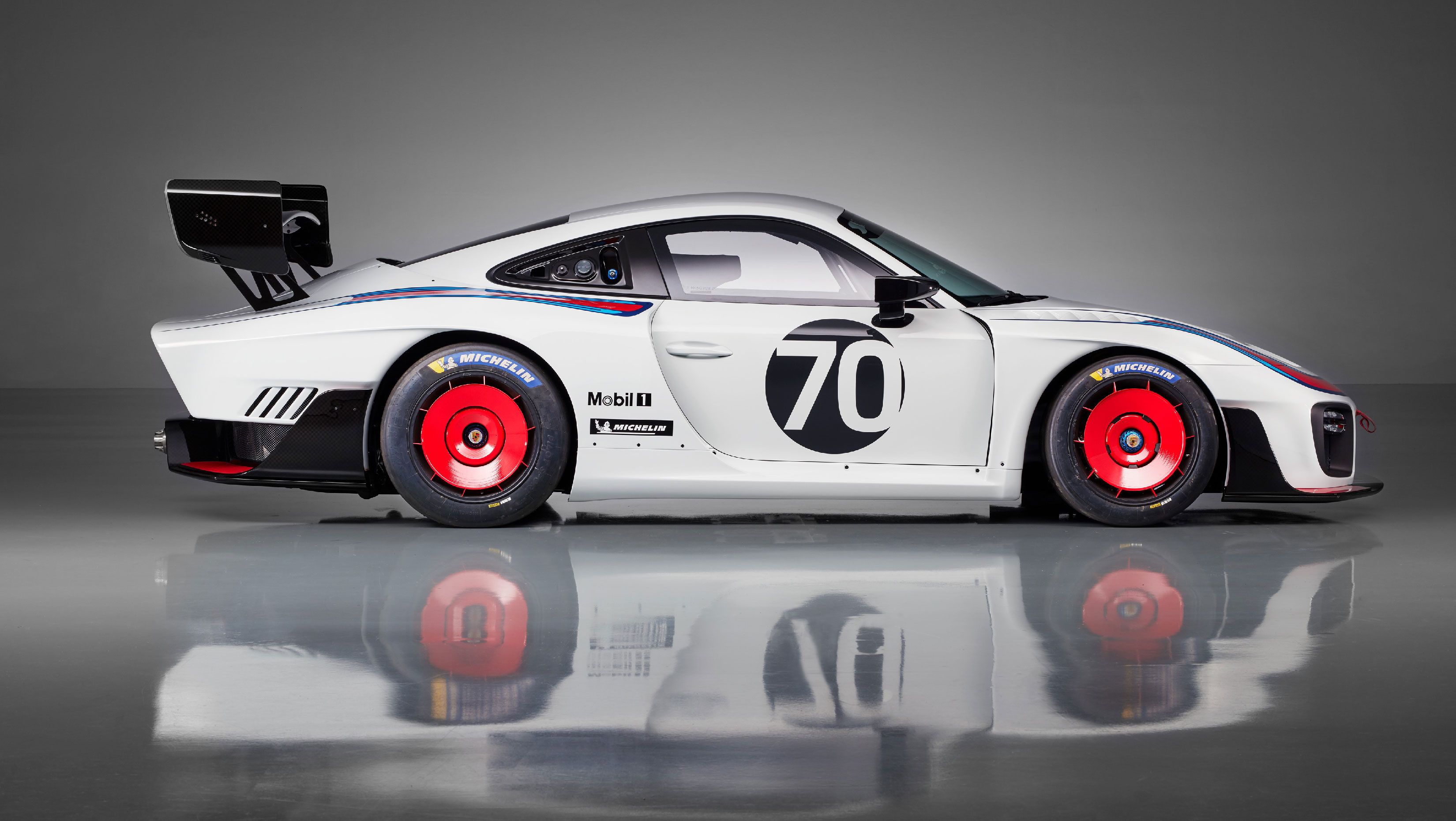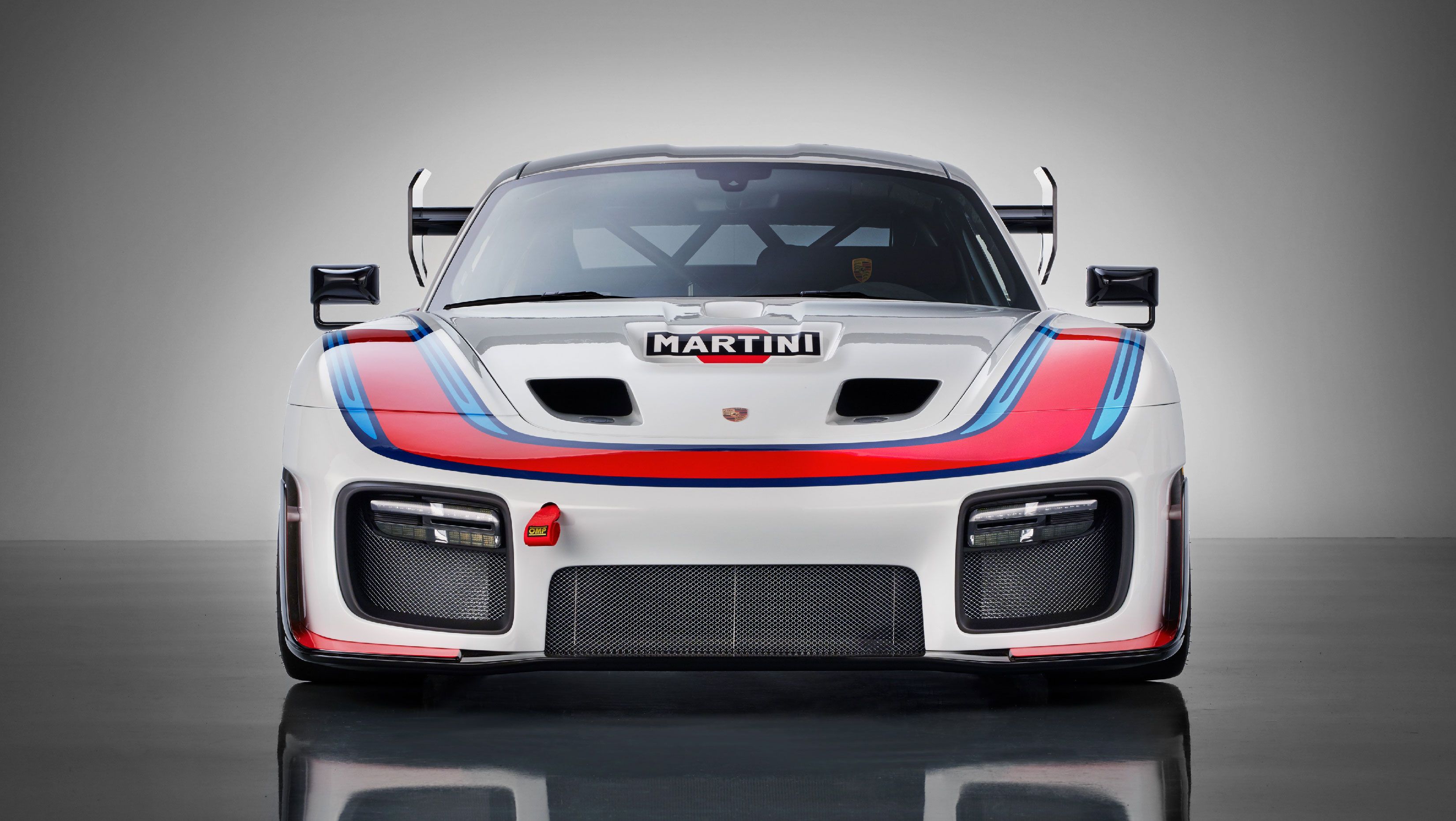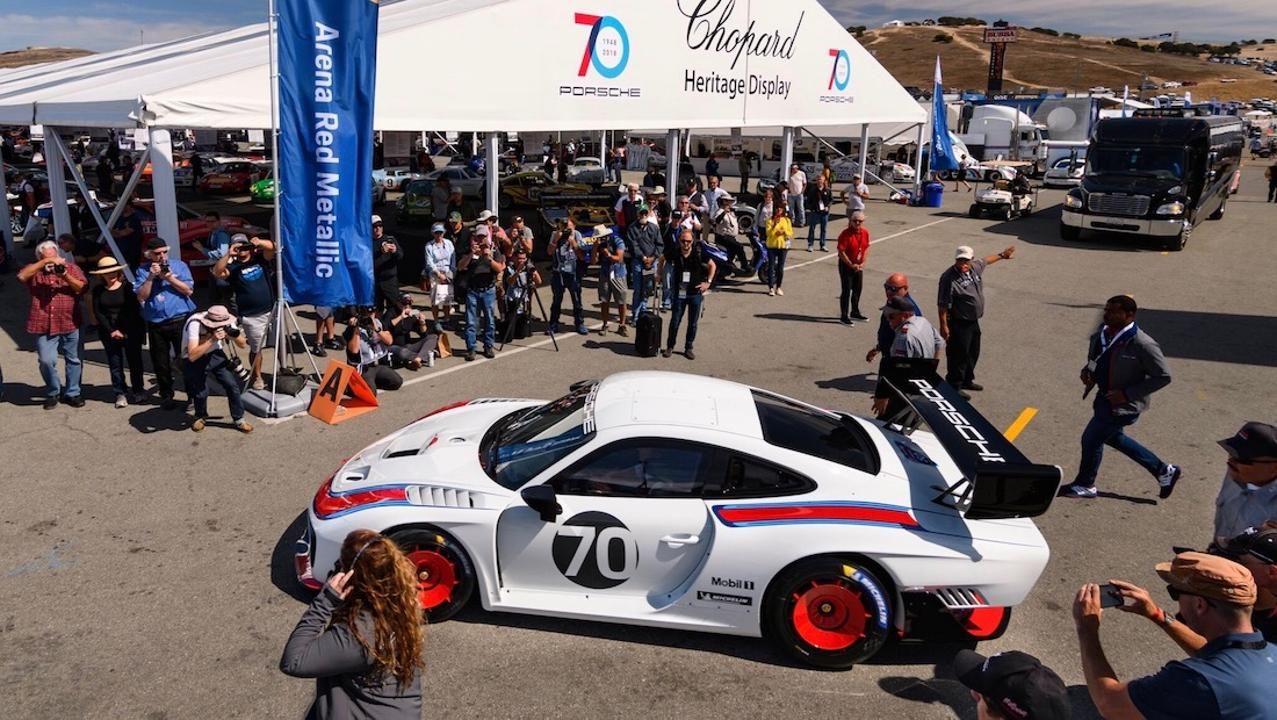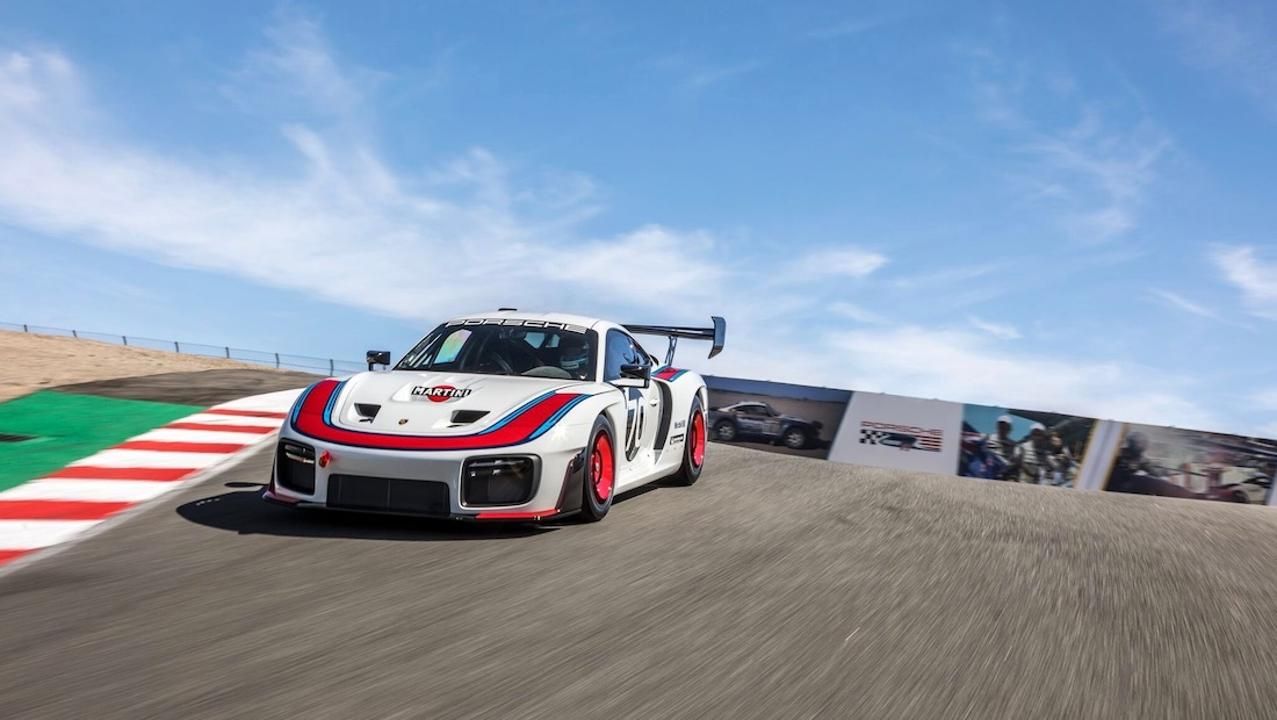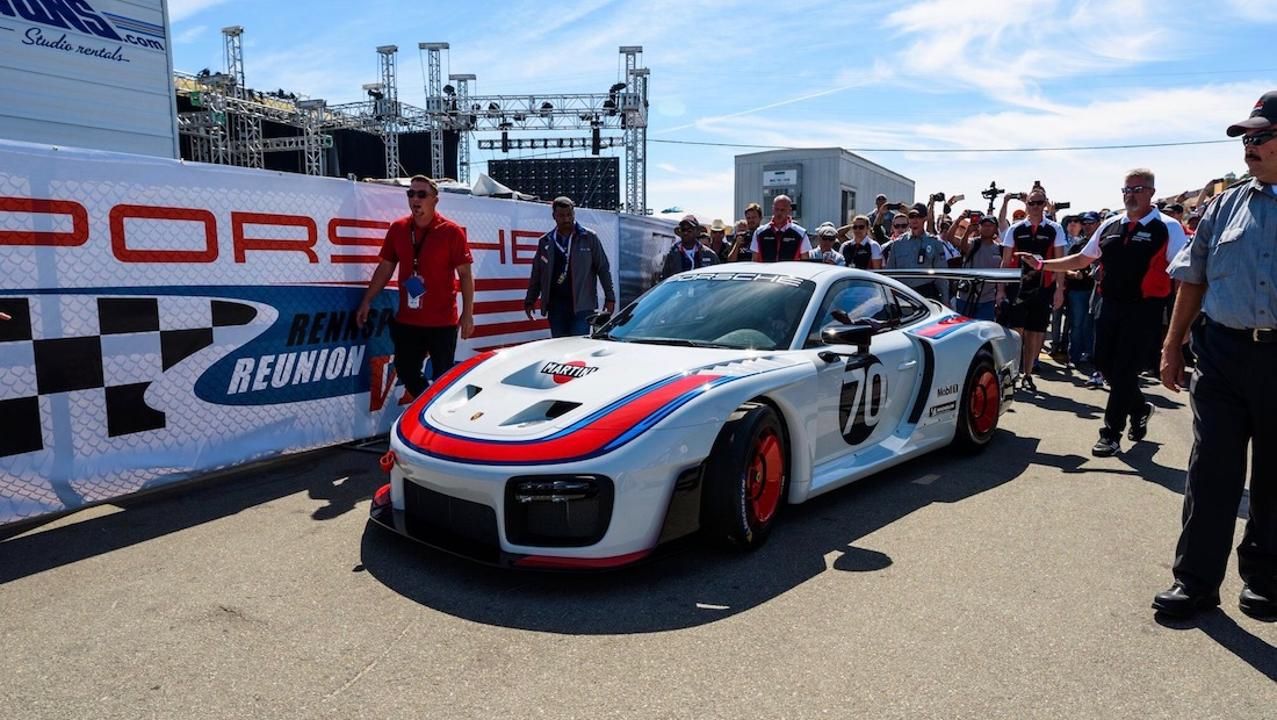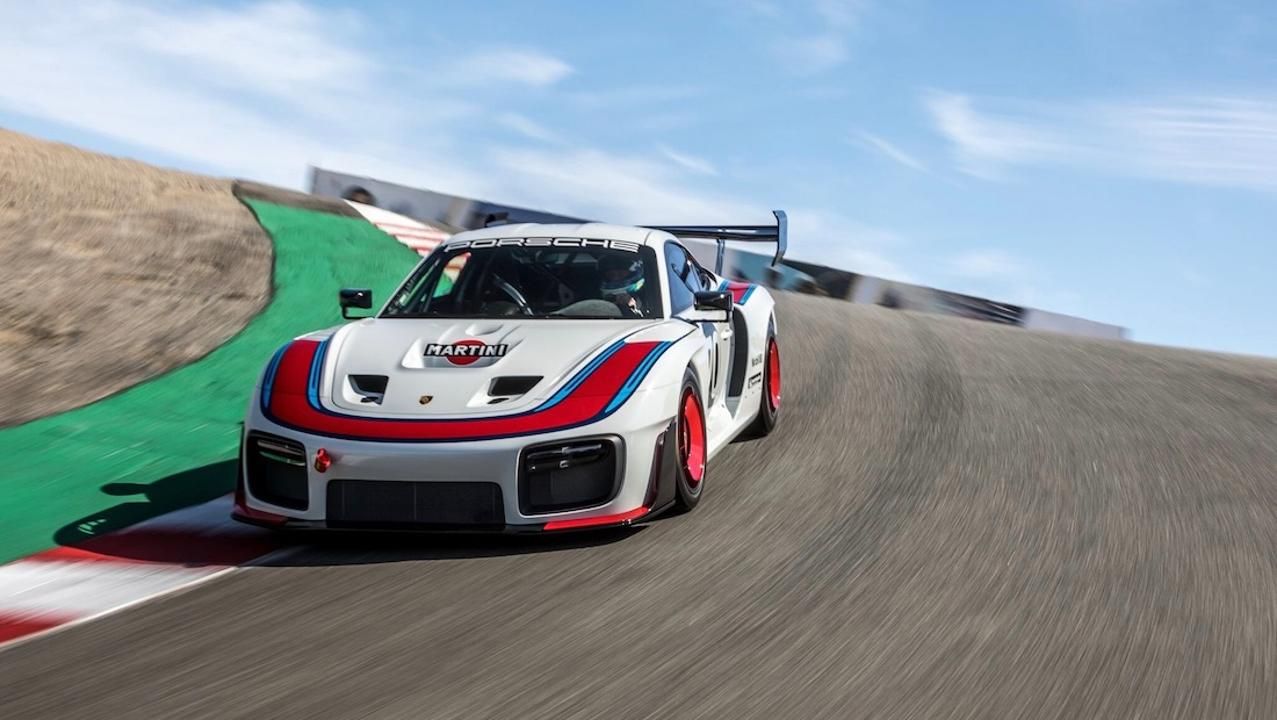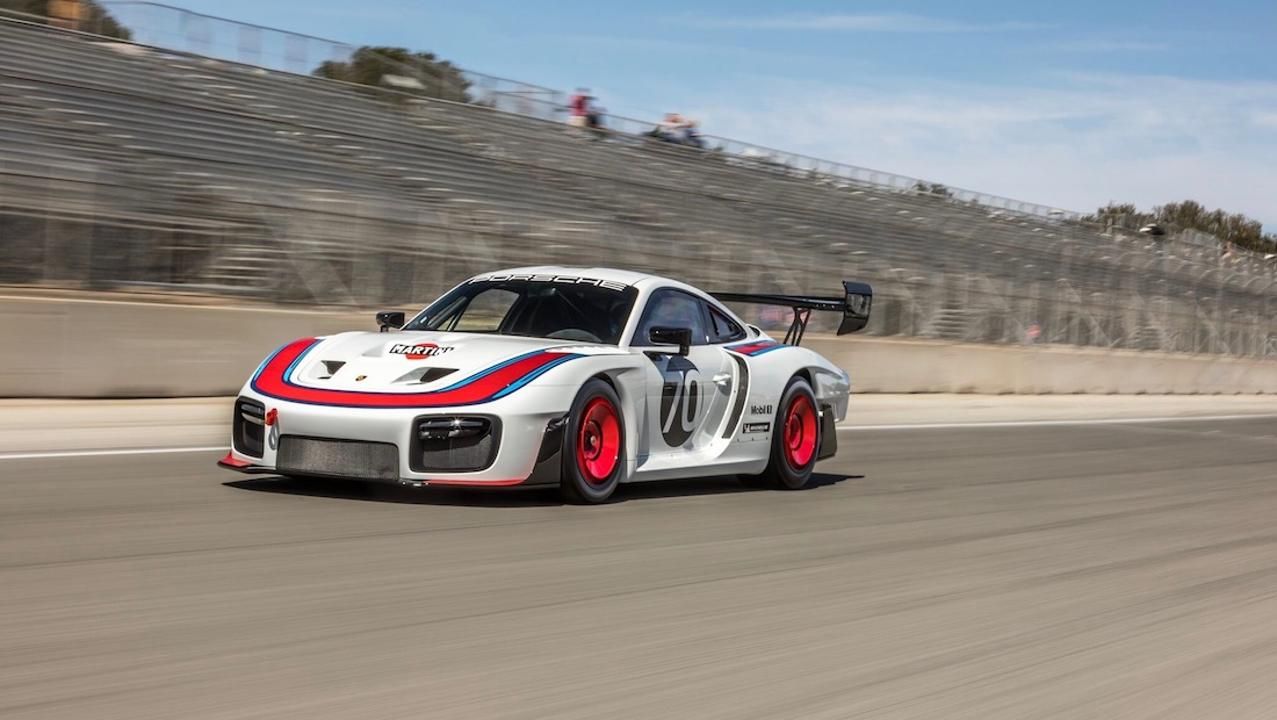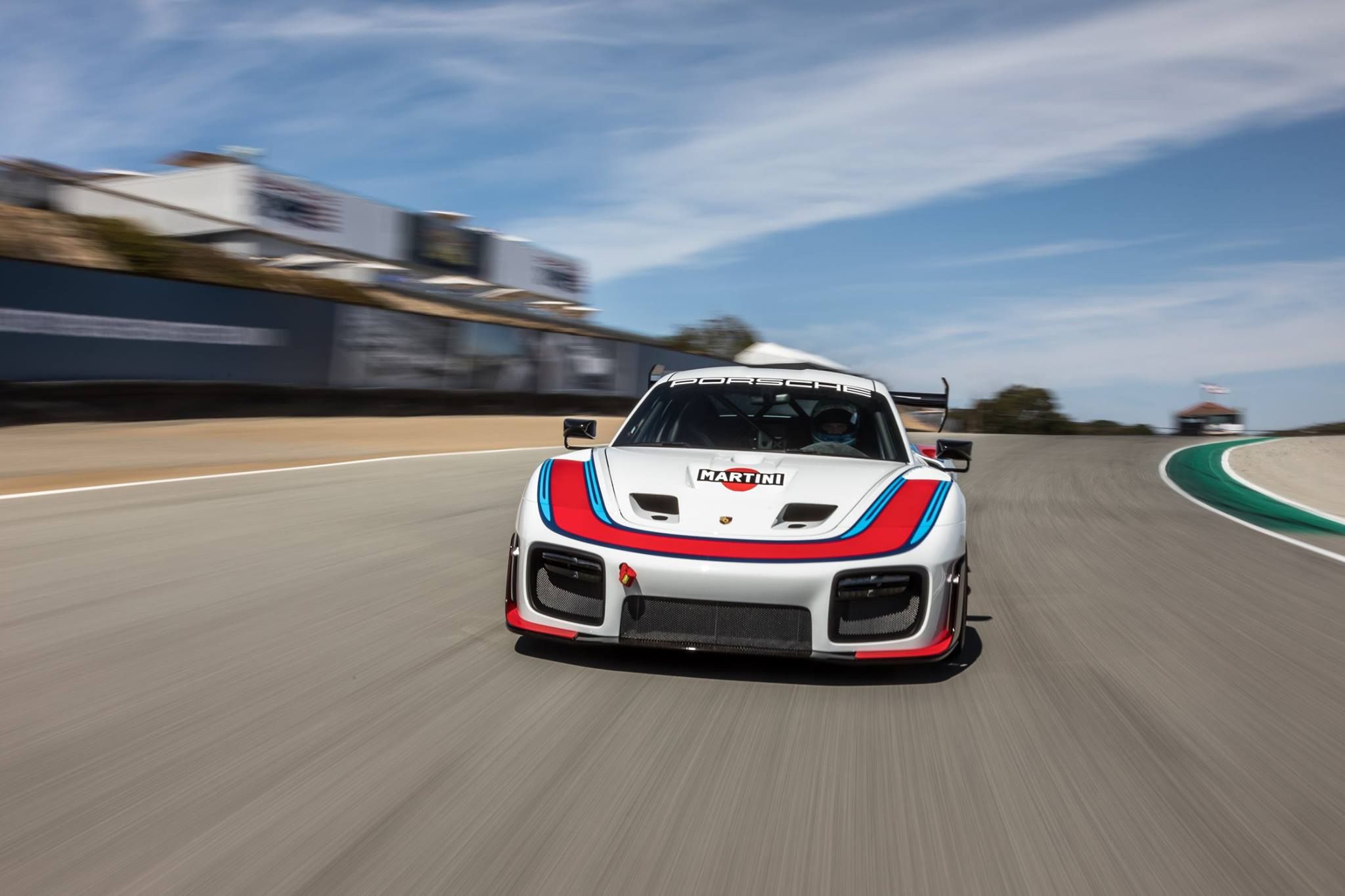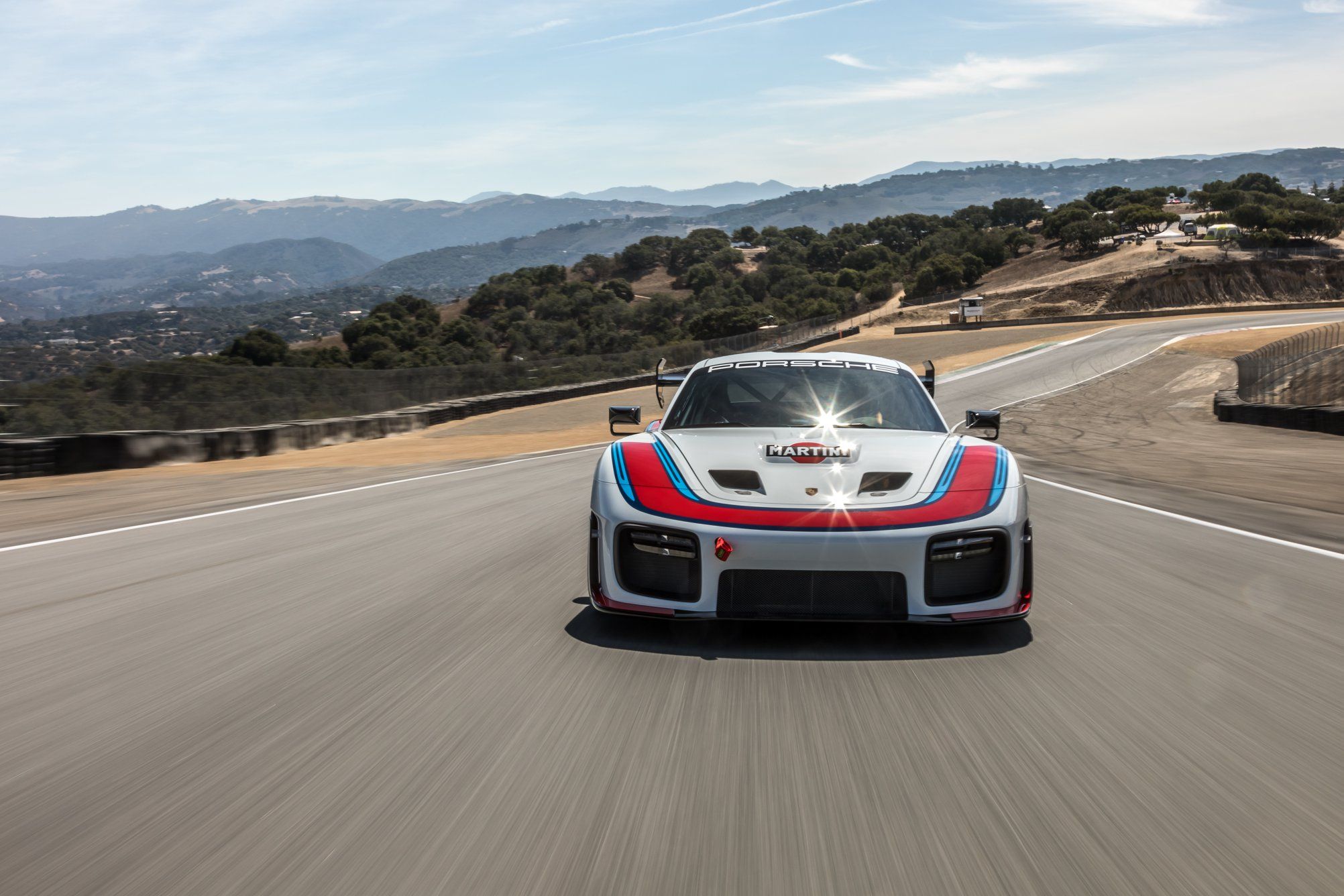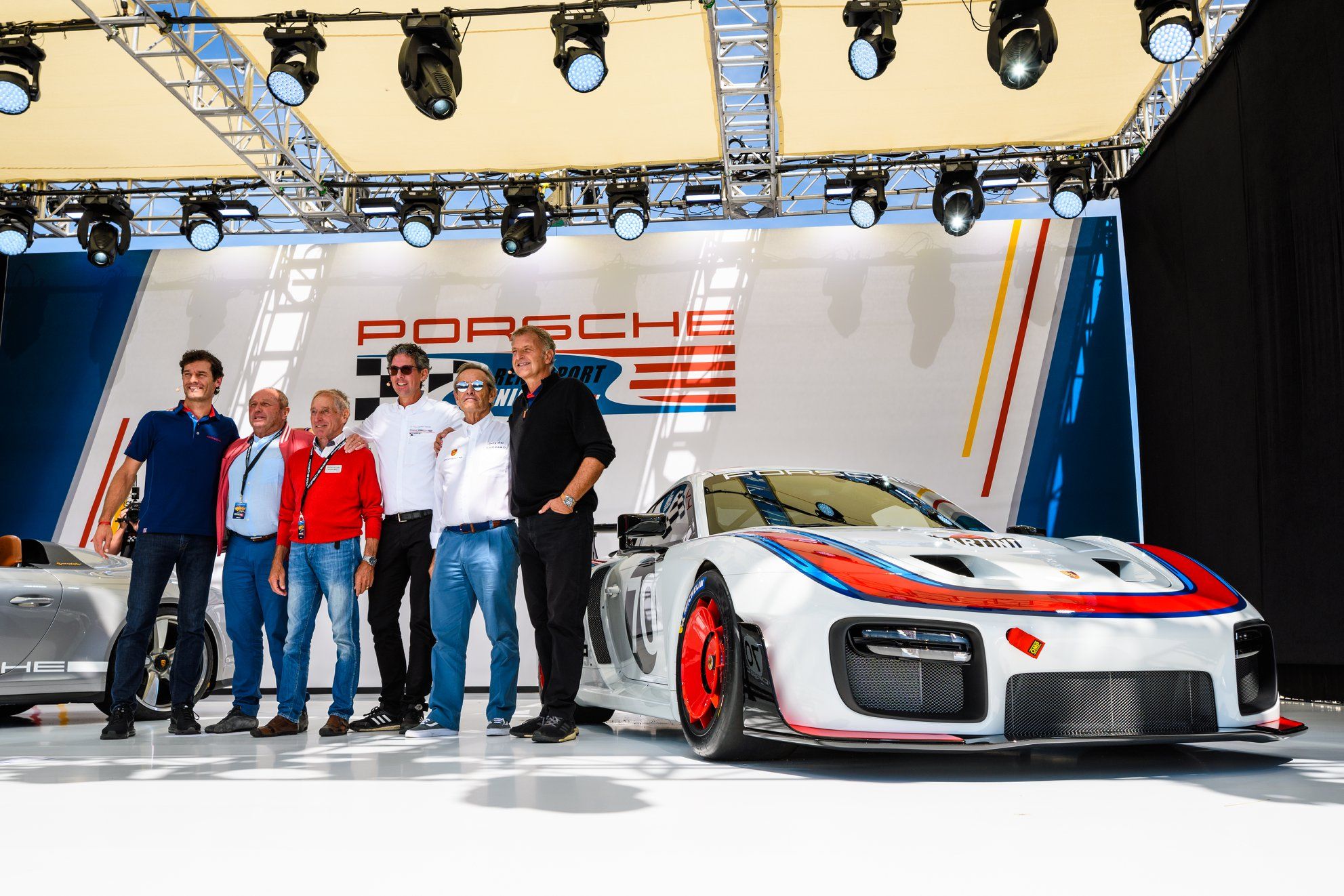The year-long celebration of Porsche's 70th birthday is just that! When we thought Porsche couldn't possibly pop up with a new car to celebrate its birthday, after debuting the 919 'Tribute' and the 911 (993) 'Project Gold,' the Germans decided to surprise everyone with a 935 for the modern age that was presented at Laguna Seca.
"This spectacular car is a birthday present from Porsche Motorsport to fans all over the world," said Dr. Frank-Steffen Walliser, Vice President Motorsport and GT Cars for Porsche AG, upon unveiling this sci-fi-meets-retro-cool creation. "Because the car isn’t homologated for any series, engineers and designers didn’t have to follow the usual rules and thus had freedom in the development." Naturally, no place else was better to show off this limited-edition car - only 77 will be made - than at Weathertech Raceway Laguna Seca during the Rennsport Reunion VI weekend.
Indeed, what we see here doesn't resemble anything from Porsche's current fleet of race cars, or road cars for that matter, but it was strongly inspired by a car from Porsche's past. The inspiration is the 40-year-old Porsche 935/78 known as 'Moby Dick' for its extra-long rear tail section, which raced only four times in 1978 but its legacy lives to this day.
The original 935, unlike this new model based on the Porsche 911 (991) GT2 RS, was built out of necessity. Porsche needed a car to compete in the new-for-1976 Group 5 rulebook that was introduced in the World Championship for Makes to attract manufacturer interest as the prototype car counts were at an all-time low.
The rulebook allowed for groundbreaking modifications to be done to the bodywork, as long as the roofline, windows, and doors were those of the production 911. With this freedom in mind, Porsche ditched the twin-headlight setup for a slant-nose front end with obvious aerodynamic gains. The widebody that resulted, coupled with the flat-six 2.9-liter engine from the 930, ensured that Porsche was the leader of the pack in 1976 and beyond.
Constant development work saw Porsche roll a new model in 1977, known as the 935/77 and a new one again for 1978, the 935/78, as well as working to benefit customers by updating its original 1976 design and offering it to private racing outfits under the 935/77A, 935/78A, and 935/79 designations.
The cars were so successful that they just about defined what Group 5 was all about: ludicrous silhouette bodywork, immense firepower from the engines - up to 700-horsepower for the later versions - and amazing speeds. Under various guises, the 935 won the 12 Hours of Sebring multiple times, the 24 Hours of Daytona multiple times, the 24 Hours of Le Mans once in the overall classification, and the World Championship for Makes for four years in a row.
A few of the aforementioned privateer outfits, due to their close affiliation with the factory, were allowed to modify the 935 further, according to their own plans. That's how the Kremer-developed cars were born, as well as those constructed by Joest Racing, Fabcar or AIR. In fact, the Porsche 935 that won at Le Mans in 1979 wasn't a works entry, Porsche dropping the Group 5 program after it retired the 935/78 from competition, but a privateer one from Kremer Racing with their own 935 K3 which was probably more celebrated in its day than the factory-developed cars.
All these victories, and Porsche's improvements of its turbocharging technology which led to their domination of Group C in the '80s, grant the 935 a spot in Porsche's gallery of legends. It is, then, easy to see why the engineers in Zuffenhausen built this rolling tribute that is the 935 Type 991 Generation 2. This also means that the hype is big and, although it's not homologated for any racing series, the new 935 has to live up to its predecessors on the race track. That's why Porsche chose to unveil the car at the Rennsport Reunion VI.
Keep reading to find out more about the 935 Type 991 Gen. 2
2018 Porsche 935 Type 991 Gen. 2
- Make: Array
- Model: 2018 Porsche 935 Type 991 Gen. 2
- Engine/Motor: flat-6
- Horsepower: 700 @ 7000
- Torque: 550 @ 2200
- [do not use] Vehicle Model: Array
Exterior Styling
This Clubsport racer, as Porsche puts it, will surely turn heads at any race track it shows up. Although the chassis, engine and transmission are from Porsche’s ludicrous street-legal Porsche GT2 RS, the 935 is not something you can’t drive down the road. That’s because everything that makes is strikingly dramatic isn’t there just to excite old-school fans who remember the original from 40 years ago; it’s all about functioning aerodynamic features that help you go faster on a closed course.
There are louvered air vents atop the sculpted fenders which follow the design of the original 935s that were made in such a way to help airflow to the wheel covers, known as turbofans, that further aided brake cooling. Those covers are present on this tribute, although they aren’t considered useful anymore in motorsport.
The wide front and rear quarter panels are rather boxy, in pure ‘70s style. The middle part of the body isn’t widened, following the original width of the street car. This another key design element of Group 5 cars that had to share a few body components with their road-going cousins. The rear end is even more ludicrous, with the rear fenders extending beyond the actual back bumper, as they did on the 935/78 which was designed with low-drag in mind, essential at Le Mans.
Again, it’s visible how Porsche studied airflow management, creating creases that are functional in the body, besides looking good. At the rear, the lower part of the splitter rounds out the back and turns into vertical elements that follow the line of the wheel arch itself. The diffuser itself is minimal, and it makes way for the two titanium exhaust pipes that are partially exposed. The body of the car itself is from carbon fiber reinforced polymer (CFRP). You can also spot an LED rain light just above the exhaust.
Porsche 935 Type 991 Gen. 2 Exterior Dimensions
|
Weight |
3,042 pounds |
|
Length |
191.5 inches |
|
Width |
80 inches |
|
Total height |
53.5 inches |
|
Wheelbase |
96.7 inches |
Interior Design
The spartan interior of the new 935 means business.
There’s also something you won’t see in a sanctioned racer car: Alcantara leather on the dashboard. The knob of the gear shifter is made out of milled laminated wood. You’ll find something similar if step into a Carrera GT, for instance. You are protected by a full roll-cage and, if you are willing to pay, Porsche will install a passenger seat. Your lucky friend will, however, have to be careful not to step on the lithium-ion battery that sits in the footwell. There’s also an emergency fire extinguisher inside just in case.
Drivetrain And Performance
Porsche say they took the engine and drivetrain straight from the GT2 RS without modifying things too much.
Braking is done by ventilated iron brake discs on all four corners. At the front, the 15.35 inches in diameter discs are coupled with six-piston aluminum monobloc calipers. The rear wheels are served by slightly smaller discs, just 14 inches in diameter, with four-piston aluminum calipers. The light-alloy one-piece 18-inch wheels have racing-style center-lock wheel nuts.
Suspension is by MacPherson struts up front with 3-way racing dampers with reinforced tie-rods. At the back, you got multi-link suspension. Anti-roll bars are present at both ends.
To help the driver, Porsche offers the 935 with their PSM suite which stands for Porsche Stability Management. It means you get ABS and traction control as well as electro-mechanical power steering with variable steering ratios. You can choose between different mappings which offer more or less electronic interference (or help). The purists can also turn the TC off if they dare. This car is, still, only rear-wheel drive.
|
Engine |
Water-cooled 6-cylinder aluminum twin-turbo rear-mounted boxer engine with rigid mounting; 3,800 cc; stroke 77.5 mm; bore 102 mm; ca. 700 horsepower 4-valve technology with VarioCam Plus camshaft adjustment and valve lift control |
|
Transmission |
7-speed PDK gearbox with rigid mounts and short paddle throws |
|
Suspension |
Front axle: MacPherson suspension strut; forged suspension links, optimized stiffness with high-performance spherical bearings, center-lock wheel nuts; 3-way racing dampers, reinforced tie-rods; Electro-mechanical power steering with variable steering ratio; anti-roll bar |
|
Brake system |
Two separate brake circuits for front and rear axles; adjustable via brake balance bar system |
Prices
The asking price for one of the 77 new 935s is about $817,000. It may seem like a lot now, but it will most likely be an intelligent place to invest your money in. As with many other limited-edition Porsches – think of the 911R or the old-school 997-gen. Speedster and Coupe editions – the prices will only go up over the years.
This isn’t to say you should buy this car to flip it, but it does multiply its value in time. What Porsche would love for you to do with it is, obviously, to take it to a track day, a Clubsport event or an Autocross event, if you really want to brag, and hammer it down all day long. As with any Porsche, it’s meant to be driven, not kept in a glass bubble for two decades then brought to an auction house.
Competition
The reinvented 935 doesn’t really have direct competitors. It isn’t up there in the extreme league of performance with the Aston-Martin Vulcan, the Ferrari FXX-K, the McLaren Senna GTR or other track day-only cars, but it is no slouch. It should keep up with Cup-spec cars like the Porsche 911 GT3 Cup, the Ferrari 488 Challenge and the Lamborghini Huracan Super Trofeo. All of these, though, are lighter, since they’re made for proper racing, not track days.
On the other hand, due to improved aerodynamics, it should be quicker around a twisty circuit than other Porsche road cars, although it doesn’t come equipped with slicks. Porsche themselves did not compare the new 935 to any other road car in their official press release, so it’s safe to say they want it to stay in a league of its own! That doesn’t mean that you shouldn’t go out and smack it around a track and see who can beat your car which comes with a bunch of Porsche Motorsport engineers to help you set it up and get the show going.
Final Thoughts
Porsche’s idea to revive a racing legend such as the 935 is incredible in its own right. That they will make 76 more examples besides the one shown at Laguna Seca, is the truly special thing in the whole deal. Usually, when a constructor shows a modern reinterpretation of an old car, there is only one example built. Think about Peugeot’s latest E-Legend concept which explores the design cues of the ‘60s 504 Coupe with a modern swing.
The Germans, though, went a step further with this “gift,” as Dr. Walliser calls it. As an after-hours project built during the past year, the result boasts classic Porsche attention to detail and honors the past in the perfect way: by enhancing it. All of the aero elements are inspired by those of old but have been carefully studied to be better than what was available four decades ago. Granted, the styling might not be everyone’s cup of tea, but you can’t deny it deserves all the praise it will get. Let’s just wait and see just how potent it is around a track.
Further Reading
Read our full review on the 2018 Porsche 911 GT2 RS.

